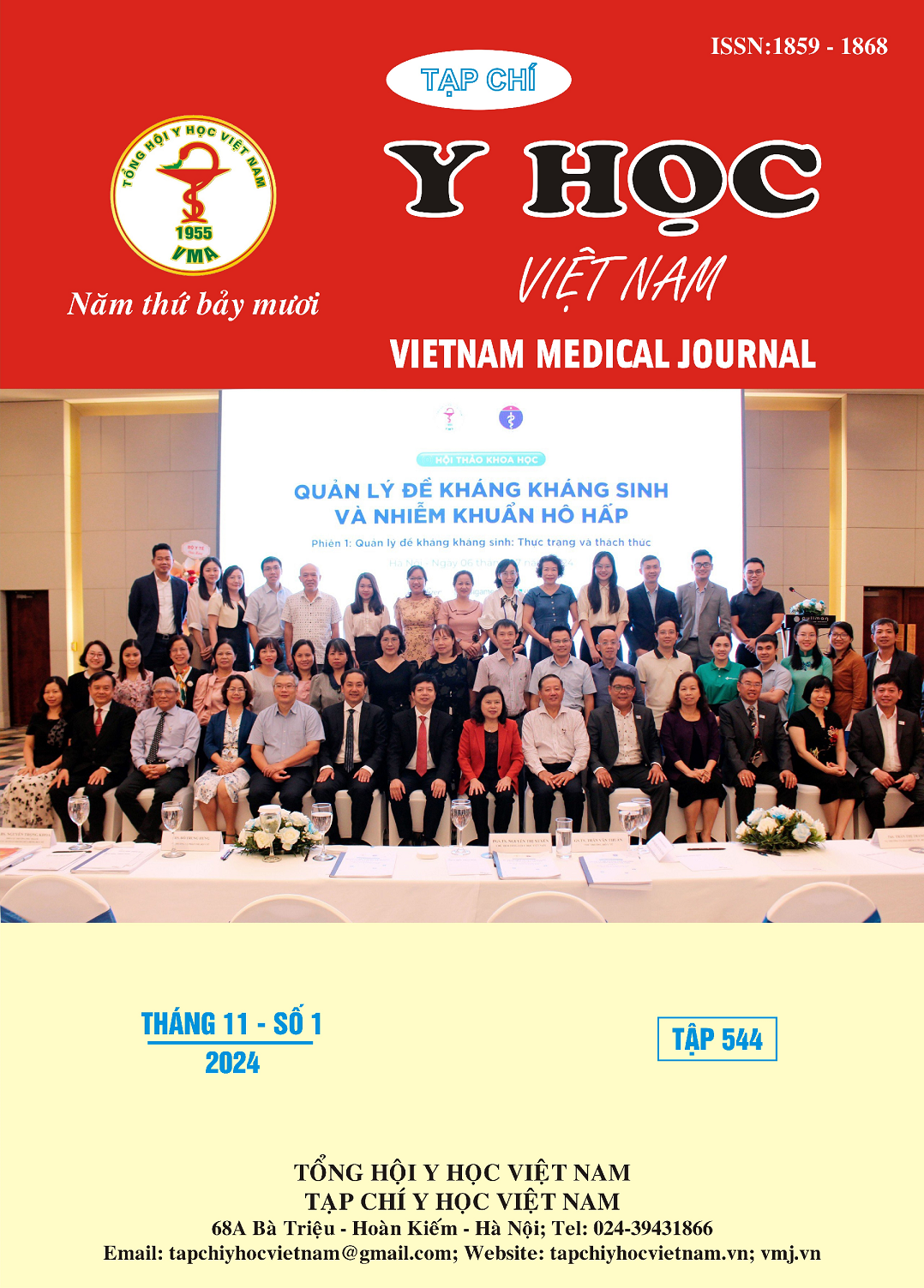ĐẶC ĐIỂM VIÊM DẠ DÀY RUỘT TĂNG BẠCH CẦU ÁI TOAN TẠI BỆNH VIỆN NHI ĐỒNG 2
Nội dung chính của bài viết
Tóm tắt
Đặt vấn đề: Viêm dạ dày ruột tăng bạch cầu ái toan là bệnh viêm mạn tính hiếm gặp, đặc trưng bởi sự thâm nhiễm khu trú hay lan toả của bạch cầu ái toan trong đường tiêu hoá. Mục tiêu: Mô tả đặc điểm lâm sàng, cận lâm sàng của bệnh viêm dạ dày ruột tăng bạch cầu ái toan tại Bệnh viện Nhi Đồng 2 từ 01/2018 đến 08/2024. Đối tượng: Trẻ được chẩn đoán viêm dạ dày ruột tăng bạch cầu ái toan tại Bệnh viện Nhi Đồng 2. Phương pháp nghiên cứu: Mô tả hàng loạt ca. Kết quả: Có 25 trường hợp viêm dạ dày ruột tăng bạch cầu ái toan. Tỷ lệ nam:nữ là 2,1:1. Nhóm trên 6 tuổi chiếm 84%. Tiền căn dị ứng gặp ở 10 (40%) trẻ. Triệu chứng thường gặp là đau bụng, nôn, tiêu chảy chiếm tỉ lệ lần lượt là 84%, 72%, 52%. Bạch cầu ái toan (BCAT) máu tăng ở 80% trường hợp. Tỉ lệ BCAT trung bình là 22,6±19,8%. Phân loại bệnh theo thể niêm mạc, thanh mạc và cơ gặp ở lần lượt 72%, 20%, 8% các trường hợp. Vị trí thâm nhiễm bạch cầu ái toan chủ yếu là hồi tràng (72%), đại tràng (56%). Số lượng BCAT trung bình/HPF ở dạ dày (36,3±14,1), tá tràng (75,5±54,3), hồi tràng (257,5±198,3) và đại tràng (92,1±21,1). Kết luận: Viêm dạ dày ruột tăng BCAT thường gặp ở trẻ nam, trên 6 tuổi. Triệu chứng thường gặp là đau bụng, nôn, tiêu chảy. BCAT máu tăng trong 80% trường hợp. Vị trí thâm nhiễm BCAT chủ yếu là hồi tràng.
Chi tiết bài viết
Từ khóa
Viêm dạ dày ruột tăng bạch cầu ái toan, nội soi sinh thiết, bạch cầu ái toan ở trẻ em, đường tiêu hoá.
Tài liệu tham khảo
2. Antoine Abou Rached WEH. Eosinophilic gastroenteritis: Approach to diagnosis and managemen. World J Gastrointest Pharmacol Ther. 2016;7(4):513-523. doi:10.4292/wjgpt.v7.i4.513
3. Chen Y SM. Preliminary evidence in treatment of eosinophilic gastroenteritis in children: A case series. World J Clin Cases. 2022;10(19):6417-6427. doi:10.12998/wjcc.v10.i19.6417
4. Nguyễn Thị Việt Hà và cộng sự. Đặc điểm lâm sàng, cận lâm sàng bệnh viêm dạ dày ruột tăng bạch cầu ái toan ở trẻ em. Tạp Chí Y Học Việt Nam. 2024;542(1):39-43, doi.org/10.51298/ vmj.v542i1.10937
5. Kobayashi S TT, Umetsu S, et al. . Clinical features of pediatric eosinophilic gastroenteritis. Pediatr Int. 2022;64(1)doi:10.1111/ped.15322.
6. Tien FM WJ, Jeng YM, et al. Clinical features and treatment responses of children with eosinophilic gastroenteritis. Pediatr Neonatol 2011;52(5):272-278. doi:10.1016/j.pedneo.2011.06.006
7. Cheng LJ ZS. Abdominal ascites in children as the presentation of eosinophilic gastroenteritis: A surgeon's perspective. Clin Res Hepatol Gastroenterol. 2019; 43(2)doi: 10.1016/j.clinre.2018.11.003
8. Votto M DFM, Olivero F, Raffaele A et al. Malnutrition in Eosinophilic Gastrointestinal Disorders. Nutrients 2020;13(1288) (1)doi:10.3390/ nu13010128
9. Yoo IH CJ, Joo JY, Yang HR. . Fecal Calprotectin as a Useful Non-Invasive Screening Marker for Eosinophilic Gastrointestinal Disorder in Korean Children. J Korean Med Sci. 2020; 35(17)doi: 10.3346/jkms.2020.35.e120.
10. Nguyễn Thị Nhã Đoan và cộng sự. Tràn dịch màng bụng tăng bạch cầu ái toan. Tạp chí Y học Thành phố Hồ Chí Minh. 2015;19(1):119 -126.


